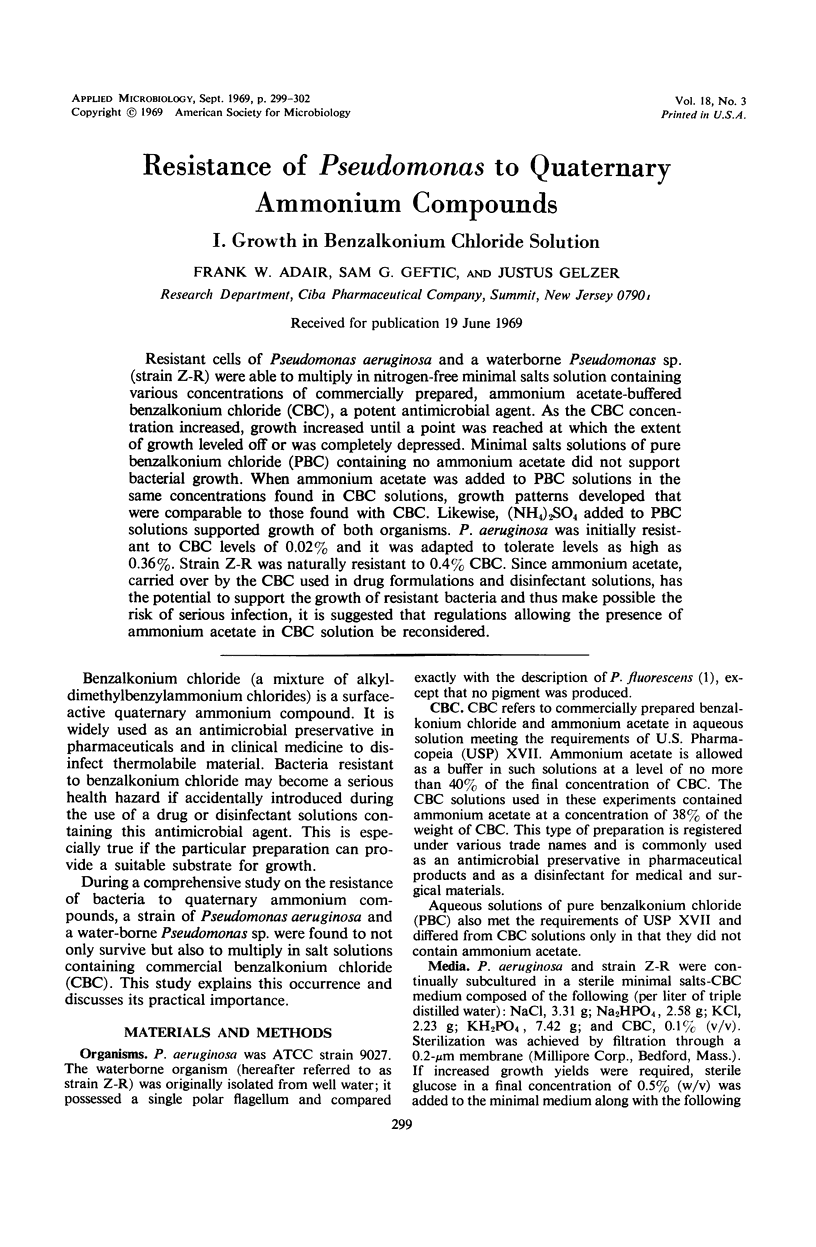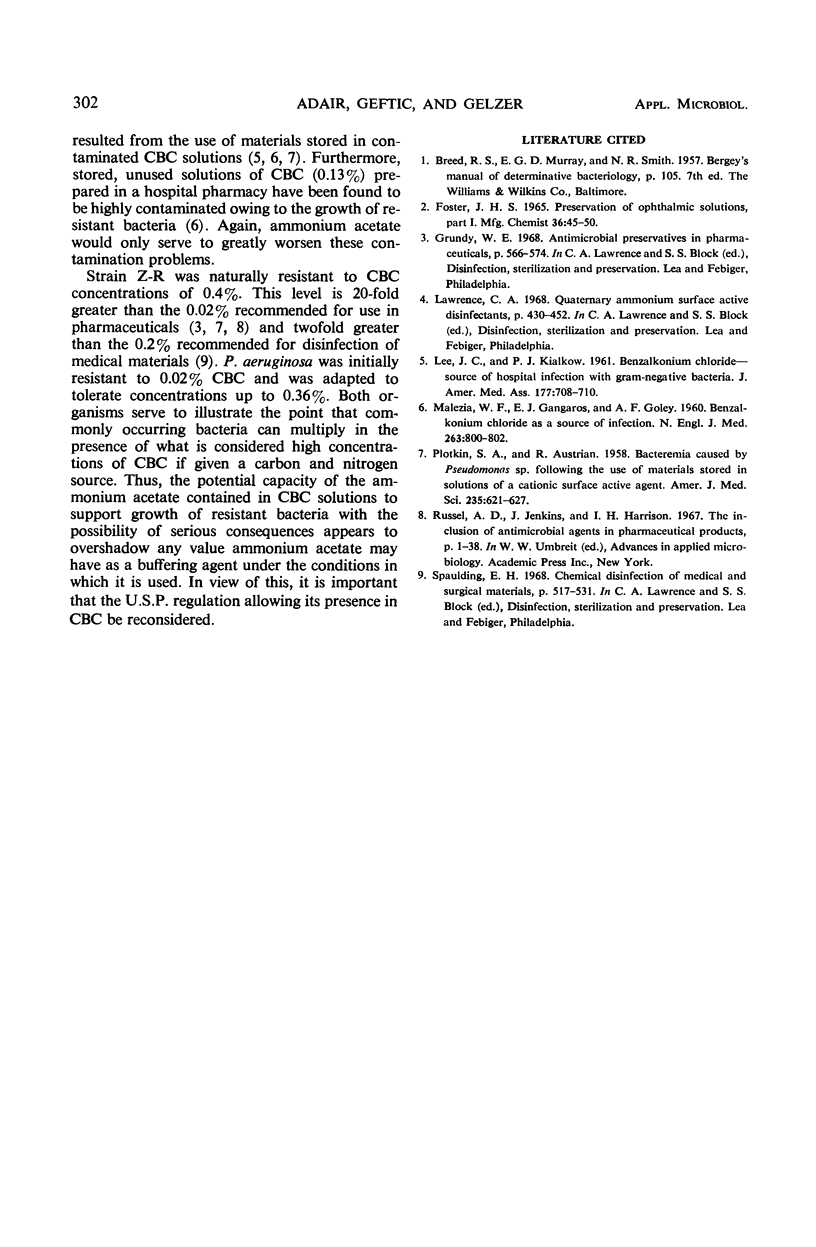Abstract
Resistant cells of Pseudomonas aeruginosa and a waterborne Pseudomonas sp. (strain Z-R) were able to multiply in nitrogen-free minimal salts solution containing various concentrations of commercially prepared, ammonium acetate-buffered benzalkonium chloride (CBC), a potent antimicrobial agent. As the CBC concentration increased, growth increased until a point was reached at which the extent of growth leveled off or was completely depressed. Minimal salts solutions of pure benzalkonium chloride (PBC) containing no ammonium acetate did not support bacterial growth. When ammonium acetate was added to PBC solutions in the same concentrations found in CBC solutions, growth patterns developed that were comparable to those found with CBC. Likewise, (NH4)2SO4 added to PBC solutions supported growth of both organisms. P. aeruginosa was initially resistant to CBC levels of 0.02% and it was adapted to tolerate levels as high as 0.36%. Strain Z-R was naturally resistant to 0.4% CBC. Since ammonium acetate, carried over by the CBC used in drug formulations and disinfectant solutions, has the potential to support the growth of resistant bacteria and thus make possible the risk of serious infection, it is suggested that regulations allowing the presence of ammonium acetate in CBC solution be reconsidered.
Full text
PDF



Selected References
These references are in PubMed. This may not be the complete list of references from this article.
- LEE J. C., FIALKOW P. J. Benzalkonium chloride-source of hospital infection with gram-negative bacteria. JAMA. 1961 Sep 9;177:708–710. doi: 10.1001/jama.1961.73040360013012a. [DOI] [PubMed] [Google Scholar]
- MALIZIA W. F., GANGAROSA E. J., GOLEY A. F. Benzalkonium chloride as a source of infection. N Engl J Med. 1960 Oct 20;263:800–802. doi: 10.1056/NEJM196010202631608. [DOI] [PubMed] [Google Scholar]
- PLOTKIN S. A., AUSTRIAN R. Bacteremia caused by Pseudomonas sp. following the use of materials stored in solutions of a cationic surface-active agent. Am J Med Sci. 1958 Jun;235(6):621–627. doi: 10.1097/00000441-195806000-00001. [DOI] [PubMed] [Google Scholar]
- Russell A. D., Jenkins J., Harrison I. H. The inclusion of antimicrobial agents in pharmaceutical products. Adv Appl Microbiol. 1967;9:1–38. doi: 10.1016/s0065-2164(08)70523-9. [DOI] [PubMed] [Google Scholar]


